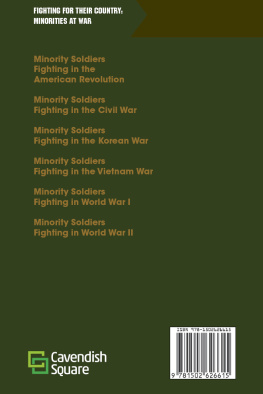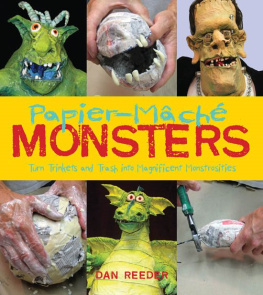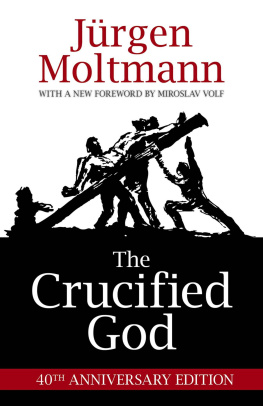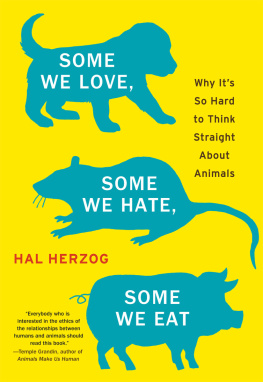Jurgen Reeder - Hate and Love in Pyschoanalytical Institutions
Here you can read online Jurgen Reeder - Hate and Love in Pyschoanalytical Institutions full text of the book (entire story) in english for free. Download pdf and epub, get meaning, cover and reviews about this ebook. year: 2020, publisher: Other Press, genre: Romance novel. Description of the work, (preface) as well as reviews are available. Best literature library LitArk.com created for fans of good reading and offers a wide selection of genres:
Romance novel
Science fiction
Adventure
Detective
Science
History
Home and family
Prose
Art
Politics
Computer
Non-fiction
Religion
Business
Children
Humor
Choose a favorite category and find really read worthwhile books. Enjoy immersion in the world of imagination, feel the emotions of the characters or learn something new for yourself, make an fascinating discovery.
- Book:Hate and Love in Pyschoanalytical Institutions
- Author:
- Publisher:Other Press
- Genre:
- Year:2020
- Rating:4 / 5
- Favourites:Add to favourites
- Your mark:
- 80
- 1
- 2
- 3
- 4
- 5
Hate and Love in Pyschoanalytical Institutions: summary, description and annotation
We offer to read an annotation, description, summary or preface (depends on what the author of the book "Hate and Love in Pyschoanalytical Institutions" wrote himself). If you haven't found the necessary information about the book — write in the comments, we will try to find it.
Hate and Love in Pyschoanalytical Institutions — read online for free the complete book (whole text) full work
Below is the text of the book, divided by pages. System saving the place of the last page read, allows you to conveniently read the book "Hate and Love in Pyschoanalytical Institutions" online for free, without having to search again every time where you left off. Put a bookmark, and you can go to the page where you finished reading at any time.
Font size:
Interval:
Bookmark:
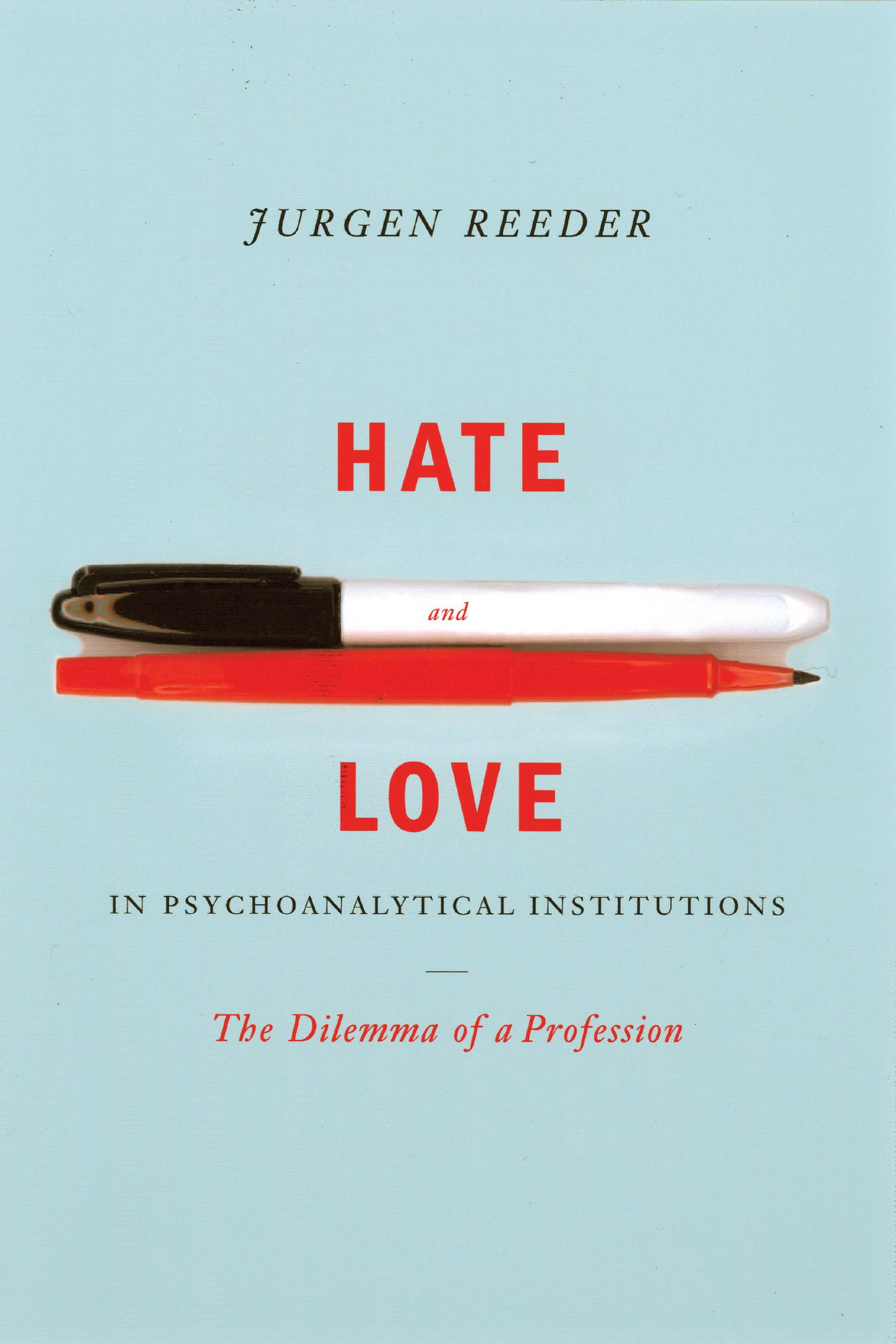
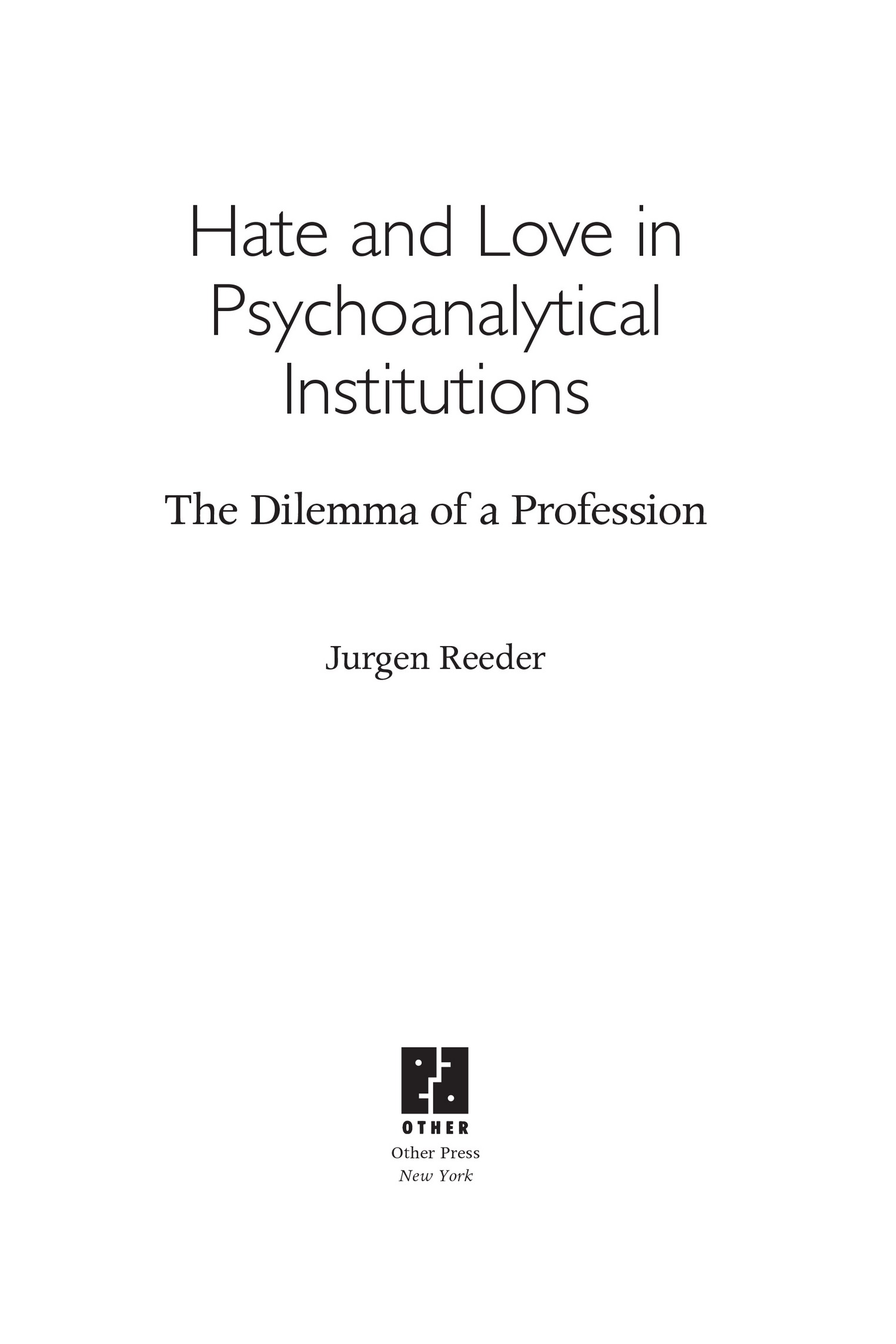
Copyright 2004 Jurgen Reeder
Production Editor: Robert D. Hack
Ebook ISBN9781635421217
All rights reserved. No part of this publication may be reproduced or transmitted in any form or by any means, electronic or mechanical, including photocopying, recording, or by any information storage and retrieval system, without written permission from Other Press LLC, except in the case of brief quotations in reviews for inclusion in a magazine, newspaper, or broadcast. For information write to Other Press LLC, 267 Fifth Avenue, 6th Floor, New York, NY 10016. Or visit our Web site: www.otherpress.com.
The Library of Congress has cataloged the printed edition as follows:
Reeder, Jurgen, 1947
Hate and love in psychoanalytical institutions : the dilemma of a profession / by Jurgen Reeder.
p. cm.
Includes bibliographical references (p.) and index.
ISBN 978-1-59051-065-0
1. PsychoanalysisPractice. 2. PsychoanalysisTraining of. 3. PsychoanalysisStudy and teaching. 4. Superego. 5. Love-hate relationships. I. Title.
RC506 .R3864 2004
616.8917dc22
2003024323
a_prh_5.6.0_c0_r0
Friends and helpful colleagues are indispensable for anyone engaged in research and writing. During the period that this project developed, a number of people have afforded their reactions, suggestions, analyses, criticism, andnot in the leastmoral support. Had any of this been lacking, the book would surely be a weak shadow of what it has turned out to be. Therefore, gratitude is due.
Above all, I wish to thank the analysand I here call Eva, who has allowed me, in Chapter 2, to include a reconstruction of the dialogue taking place during one of our sessions.
Hate and Love in Psychoanalytical Institutions has been generated under the auspices of a Swedish research program entitled Transitions: Psychoanalytic Investigations into the Nature of Change. In that context, I have Irne Matthis, Andrzej Werbart, Sonja Levander, and Gunnar Karlsson to thank for their views and inspiration during recurrent seminars, which, through the years, have become evermore important.
I also wish to thank Ulla-Britt Parment, Christer Sjdin, and Arne Jemstedt, all of whom, during the last year of my work, have read the text in its entirety and given feedback of a kind that has been necessary for me to finish the project.
My special appreciation goes to Charlotte Skawonius, who with unrelenting precision was always ready to convey how the text might be received by a nonpsychoanalytic audience. Likewise, I wish to thank John Swedenmark, who expressed very valuable views on Part 2 of Chapter 2.
Professors Birgitta Qvarsell and Arvid Lfberg at the Department of Education, Stockholm University, have provided both the program and my personal project with an abode at the university. The Swedish Council for Research in the Humanities and Social Sciences sponsored me to read, think, and write during the years 19951999. To all involved I wish to express my very deep gratitude for the confidence and generosity with which I have been received and supported.
I also wish to express my deeply felt gratitude to all those who have produced the evolving versions of The PEP Archive on CD-ROM, including more than 30,000 psychoanalytic articles from the six most prominent analytic publications in English, from their inception until 1998. Without access to the encyclopedic range of knowledge engraved on this little compact disk I would have produced a meager tome indeed.
During the course of my writing this book, preparatory work and work in progress have been published as articles in the Swedish journal Divan (Reeder 1998b, 1999), the first of which also appeared in English translation in the International Forum of Psychoanalysis (Reeder 1998c) and the second in the International Journal of Psycho-Analysis (Reeder 2002). In addition, two texts have been published in the internal Bulletin of the Swedish Psychoanalytic Association (Reeder 1998a, d). More or less modified, all these writings have been integrated into the final report. I should also mention that central aspects of Part 1 of Chapter 2 have previously appeared in Reeder 1996. I thank all the respective publishers for allowing me to include these texts in this book.
Finally, I wish to express my very sincere gratitude to Judy Cohen, who with the utmost care and sagacity has copyedited my translation during the first stages of production. Her assistance has definitely made my book a considerably more pleasant reading experience than it would have been otherwise.
Tomelilla, Sweden, March 1, 2004
I NTRODUCTION
What follows is an investigation of a certain form of inhibiting structure that seems to arise easily within certain professional cultures. It seems to appear especially in cultures that are characterized by extensive specialization and hierarchization.
I have chosen to study this phenomenon by taking psychoanalysis as my example, primarily because analysis has been my professional habitat for almost thirty years. I began my training in 1973 and matriculated in 1979, when I was 32 years old. During the first eight years of independent work I was active in full-time private practice, exclusively with analytic patients whom I saw four times a week. This early period of my career consisted of what one at that time could expect the first years of a young psychoanalysts professional life to contain: deep immersion in analytic work, many and extensive talks with colleagues, supervision individually and in different groups with visiting supervisors, trips to London for even more supervision, andnot leaststudious reading. All of this aimed at getting a grip on what it is to be a psychoanalyst and developing the capacity to conduct a meaningful and convincing dialogue with my analysands.
In my previous book, Reflecting Psychoanalysis (Reeder 1996), I had described how after these initial years I was afflicted by a certain reticence in the clinical situation. I felt that what my chosen authorities and mentors wanted to convey was no longer adequate in my personal clinical experience. I no longer knew what to say to my analysands and often they would have to find their own answers as the intervals between my interventions grew longer.
At first I found no language for interpreting and understanding my predicament, but gradually I began thinking about it as the expression of two conflicts that were possibly interconnected. The first one could be formulated thusly: With what legitimacy do I assume the right to interpret my fellow human being? The second one had to do with an internalized system of ideals and norms and my endeavor to find my own way and my own voice as a practicing psychoanalyst. From this budding insight grew a hypothesis concerning what I initially called the professional superego, a term chosen to designate both a prescriptive and an inhibiting instance, whose prescriptive aspect suggests what the analyst should know and be able to handle. In that respect, the professional superego supports the analysts professional ethos. Its proscribing and inhibiting aspect, however, installs a vigilant eye that in turn will produce a more or less correct image of criticism or condemnation from the psychoanalytic community at large.
Font size:
Interval:
Bookmark:
Similar books «Hate and Love in Pyschoanalytical Institutions»
Look at similar books to Hate and Love in Pyschoanalytical Institutions. We have selected literature similar in name and meaning in the hope of providing readers with more options to find new, interesting, not yet read works.
Discussion, reviews of the book Hate and Love in Pyschoanalytical Institutions and just readers' own opinions. Leave your comments, write what you think about the work, its meaning or the main characters. Specify what exactly you liked and what you didn't like, and why you think so.



